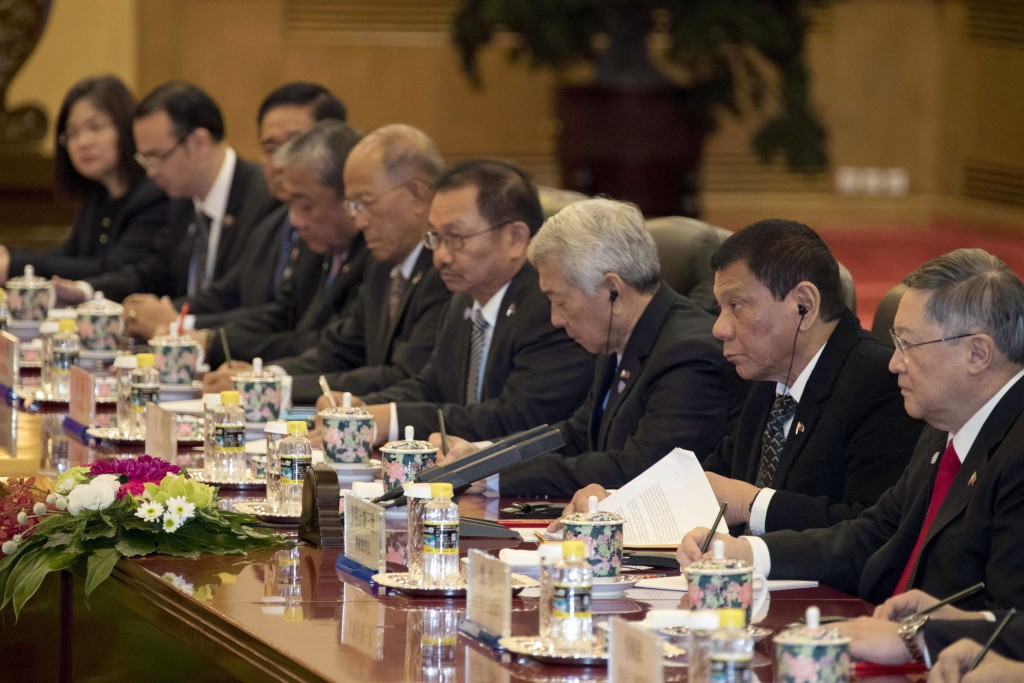In a statement, the DOF said the high-level Philippine delegation visiting the mainland until tomorrow includes Finance Secretary Carlos G. Dominguez III, Budget Secretary Benjamin E. Diokno, Socioeconomic Planning Secretary Ernesto M. Pernia, Transportation Secretary Arthur Tugade, as well as Public Works Secretary Mark Villar.Following its “economic and political separation” from long-time ally the United States, the Duterte administration adopted an “independent” foreign policy that pivots to China, among the Philippines’ other Asian neighbors.
“While in Beijing, the Philippine officials are due to hold separate meetings with China Vice Premier Wang Yang, Commerce Minister Gao Hucheng, and National Development and Reform Commission (NDRC) chair Xu Shaoshi,” the DOF said.
NDRC is China’s chief planning and strategy agency.
The Filipino officials would also meet with top executives of China Investment Corp., a sovereign wealth fund of the Chinese government, the DOF added.
“The meetings will cover discussions on the government-to-government projects signed between the Philippines and China; the proposed projects for financing and feasibility studies; the chairmanship of the Philippines this year of the Association of Southeast Asian Nations (Asean); and matters concerning the Asian Infrastructure Investment Bank (AIIB) and the Philippines’ flagship infrastructure projects such as the Philippine National Railway South Line, the Mindanao Railway and the Subic-Clark Railway,” according to the DOF.
As a whole, about 31 projects are in the pipeline for financing by the Chinese government, including the AIIB, state planning agency National Economic and Development Authority had said.
The government planned to borrow up to $500 million from the AIIB this year to fund ready-to-implement projects, the DOF had said.
Membership in the AIIB would allow co-financing with the Manila-based multilateral lender Asian Development Bank (ADB) of the P37.76-billion Edsa Bus Rapid Transit project, as well as with the World Bank for the P23.46-billion Metro Manila flood control project, National Treasurer Roberto B. Tan had said.
DOF documents had noted that the AIIB “can provide an annual financing window to the Philippines of about $200-500 million, representing a 400-1,150 percent return on investment of our required paid-in capital of $200 million in five years.”
The financing that can be provided by the AIIB dwarfs the $11.56 million in investments needed by the country yearly to narrow the infrastructure gap until 2020, as earlier projected by the ADB, the DOF had said.
However, an ADB Institute report warned that an economic slowdown in China will significantly impact on the Philippines’ merchandise exports, especially electronics.
“Malaysia, the Philippines and Thailand export a lot in [parts and components as well as final goods]. Since China is a large economy that is close by, these Asean neighbors are clearly vulnerable to a slowdown in China,” Research Institute of Economy, Trade and Industry senior fellow Willem Thorbecke said in a working paper titled “How Would a Slowdown in the People’s Republic of China Affect Its Trading Partners?” published this month.
ADB Institute data showed that Philippine exports to China accounted for 7.4 percent of the gross domestic product.
As a share of total exports, shipments of Philippine-made goods to China composed 29.5 percent of the total.
Processed exports to China, meanwhile, accounted for 45.7 percent of total processed and ordinary exports combined.
The paper noted that “for the six most exposed economies (Taiwan, Malaysia, South Korea, Thailand, Singapore and the Philippines), exports of electronics products predominate.”

